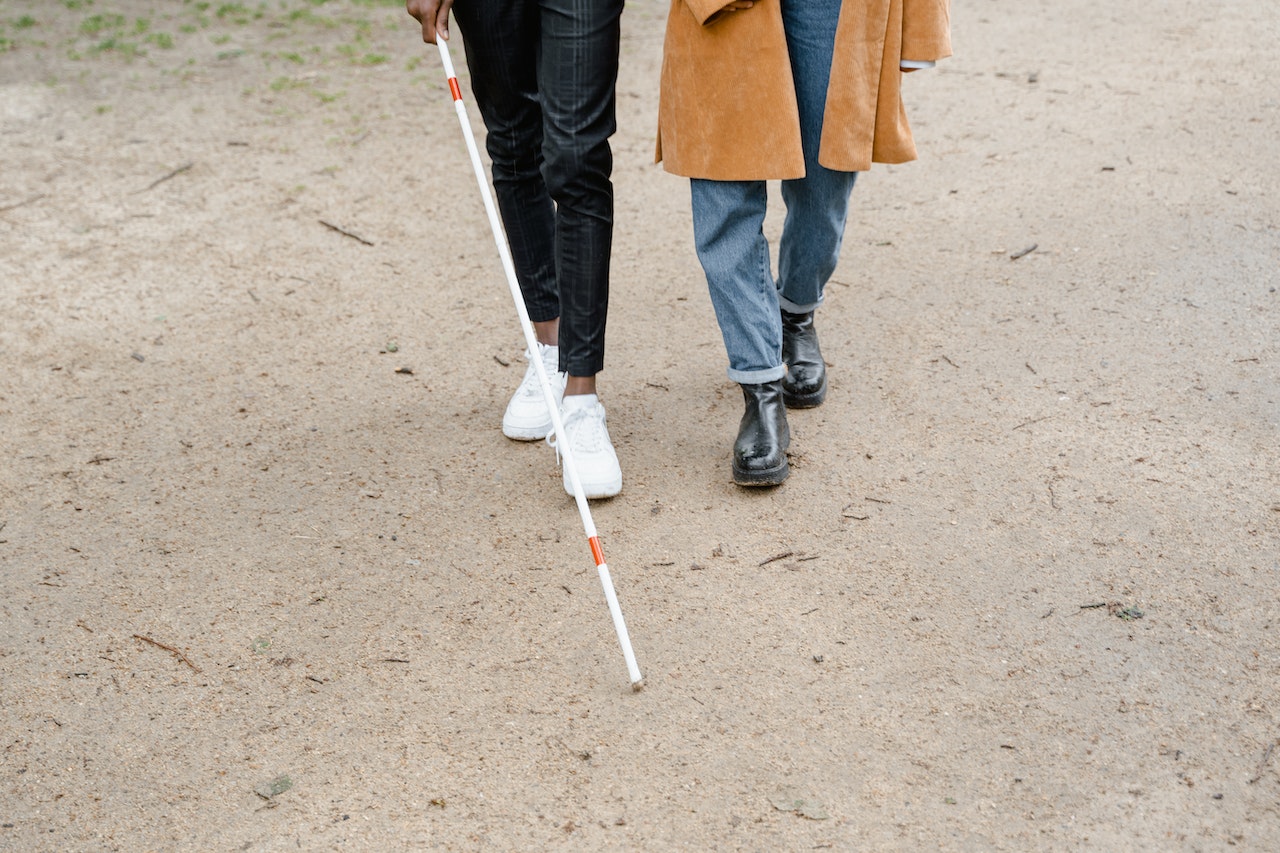
By Dr Ifigeneia Manitsa, Research Fellow in Youth Mental Health, Institute for Mental Health
School of Psychology, University of Birmingham
People with vision impairment, as well as their families, strive for their inclusion in school, work, and society in general. What is being done to achieve this and how far have we come?
Research findings have not changed much since I started working on my masters dissertation (about ten years ago!). In particular, research published more than 30 years ago continues to align with the findings of current research which highlights the lack of appropriate adaptations and actions that would promote the social inclusion of people with vision impairment.
It appears that, despite critical changes in educational curricula around the world that have attempted to ensure their school inclusion, children and adolescents with vision impairment still remain “trapped” in “inclusive” classrooms where they simply do not feel included. It is important to mention that current education has taken several steps in a more inclusive direction by including both students with and without Special Educational Needs and Disabilities (SEND) in mainstream schools. However, promoting one-size-fits-all approaches that do not focus on the specific needs and abilities of the individual seem to have an adverse effect on the school life of students with vision impairment. At all educational levels, from preschool to higher education, students with vision impairment continue to report a lack of participation in the social life of their educational institution and exclusion from a range of academic and social activities. According to their reports, the main reason for this disheartening situation is the lack of awareness and training around their communication and social needs.
This situation becomes even more discouraging when we consider that students with low vision typically fall within the gaps of current research and practice. Many studies have shown that hidden disabilities are associated with higher levels of bullying and school exclusion. This argument may also explain my recent research findings which have shown that adolescents with low vision are much less included in school compared to their blind peers.
Similar to their school and university life, people with vision impairment have also reported limited work inclusion. Current challenges faced by people with vision impairment include access to employment opportunities, accessibility to special equipment and online resources, and the ‘benefits trap’. Employees with vision impairment have also reported that they face social challenges in the workplace, such as limited interpersonal relationships and exclusion from social events.
And so, a very broad question must be concretely answered: What can we do to promote the inclusion of people with vision impairment in society? Individuals with vision impairment must have their voices heard to advocate for their needs. And what does this mean for stakeholders such as practitioners, researchers, and policy makers? It means that we need to give people with vision impairment the opportunity to express their own needs and wishes. People with vision impairment commonly report a lack of participation in research, as well as in the development of their own health and education plans. It is time to change that narrative.
Recently my research team and I held four advisory group meetings with adolescents with vision impairment, their carers, and professionals, to develop an educational game for children and young people with vision impairment. At the end of the study, all the adolescents mentioned that they had found their own voice by participating in these group meetings, and one of our participants has also been invited to a meeting with their school’s Strategic Lead for Inclusion. A paper based on the findings of this pilot study is currently being prepared.
People with vision impairment need to be involved in all decision-making processes. However, this will not happen automatically. It is important for families and professionals to strengthen the advocacy skills of children and young people with vision impairment. Practitioners and employers also need to receive appropriate training that will raise awareness of the needs of people with SEND and increase their openness to disabilities. Each country needs to invest actively in its SEND population; it has recently been found that promoting the employment of people with disabilities can lead to much greater economic outcomes because of reduced disability benefits and increased tax revenues. It is through these actions that we can achieve a more inclusive society.
- Find out more about Dr Ifigeneia Manitsa
- Back to Social Sciences Birmingham
The views and opinions expressed in this article are those of the author and do not necessarily reflect the official policy or position of the University of Birmingham.
